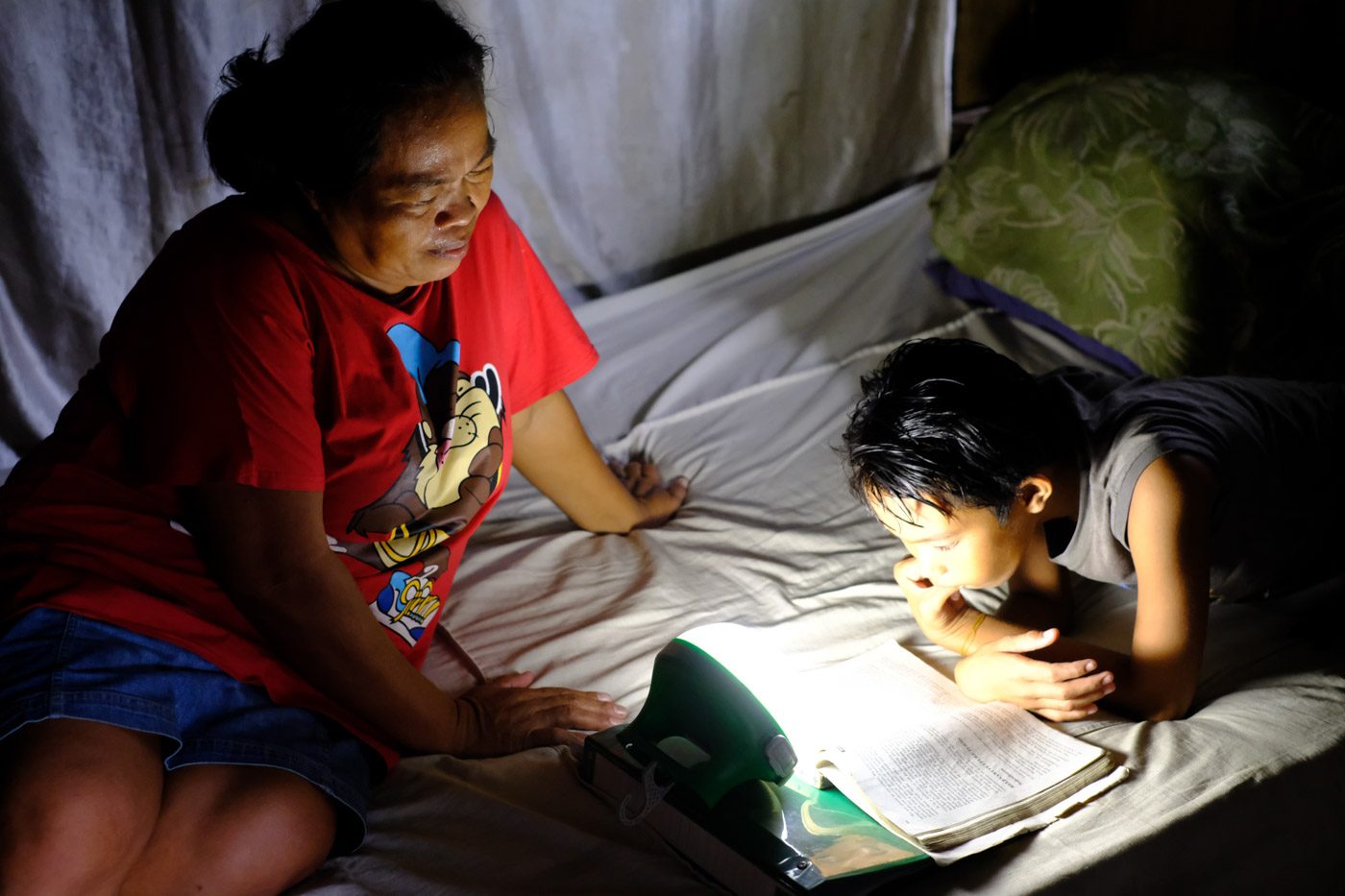SUMMARY
This is AI generated summarization, which may have errors. For context, always refer to the full article.

MANILA, Philippines – In a coastal village in Sagñay, Camarines Sur, fishermen’s wives are doing their share to protect their environment.
As members of the Sagñay Tuna Fishers Association (STFA), women leaders are rising from the ranks as members of their “Bantay Dagat” (sea patrol) team assigned to safeguard and monitor the 40-hectare marine protected and mangrove areas in their community.
Armed with solar lamps, Oliva Postrado, 51, helped enforce local fishing laws and participate in fishermen training in her community. Aside from serving as a local volunteer, she also sells fish and local food delicacies in her village. When she’s at home she also uses the lamps to do household chores which sometimes lasts until late at night. (READ: Home solar panels: a beginner’s guide to saving electricity)
“Having a portable and rechargeable solar lamp sure is handy. We use it in our monitoring station when we patrol the seas and at home when I have to do chores. It helps lessen my electricity bills and I no longer need to buy kerosene fuel for lighting.” Postrado said.
Using solar lamps helps improve living conditions in households – from helping with children’s school work, doing chores, to cooking food and going to the bathroom.
From using solar lamps, Postrado’s household can save up to P120 a week from fuel and electricity costs. These savings are channeled to their most basic needs, especially food. For a fisherman’s family of 5 who earns P450-P950 for every fishcatch at least 3 times a week, every peso counts. (READ: How practical is solar power for PH home owners?)
Using solar lamps is safer compared to gas lamps, which require constant attention, pumping air to keep the light burning which can be hazardous when left unattended.
The portable solar lamps offer a wide range of advantages. It can float and stay lit underwater and can also charge phones allowing fishers to remain in contact with their families.
“My husband uses the solar lamp to charge his phone so we can stay in touch especially when he’s out for days in the sea to catch tuna and other fish. It comforts me to know that he’s safe,” Postrado said. (READ: Why solar power needs to happen now)
Almost a year ago, STFA was also able to get support from World Wide Fund (WWF) through a Wisions grant to support sustainable fishing in the Philippines.
As part of the project, 34 solar-powered rechargeable lamps were provided to STFA. One solar lamp was donated to the “Bantay Dagat” (sea patrol) station in Atulayan island to help the community monitor and counter illegal fishing activities in the protected area.
The rest of the solar lamps were distributed to the fishermen as part of their organization’s income-generating project, supporting livelihood and fishing activities to help fishermen save on fuel costs. (READ: How cheaper solar power could disrupt the energy sector)
Other than that, a solar-powered battery charging station was built at the community fish landing center. These resources were built to further enhance sustainable fisheries in tuna-rich areas like Lagonoy Gulf in the Bicol region. WWF partnered with Solar Solutions Incorporated to support the installation and capacity building of STFA members who were trained to operate and manage the facility.
Six solar panels were installed on the fish landing center’s rooftop, which can generate up to 1,680 watts of solar energy.
This is transmitted to the hybrid inverter where solar energy is converted to electricity and stored in batteries used for charging. The battery charging station can daily charge up to 10 batteries that fishermen use for their boats.
This facility has the potential to serve thousands of fishermen who need to charge their boat batteries 3 times a week.
With this STFA aims to generate funds – collecting P15 to P70 each for charging small and big batteries, and P7 for cellphone charging. The funds that they raise cover association dues while the rest goes to a revolving fund for the charging station’s operations and other projects. Up to 3 members man the charging station daily. They are tasked to manage battery charging and ensure the upkeep and maintenance of the facility. The solar panels should be regularly cleaned using a damp cloth to remove the dust and stains to ensure that energy generation is optimal.
“Now that we manage a solar-charging station, we can now help fishing operations become more cost-efficient in our area. Through more training with the help of NGO’s and the local government we can further support the growth and development of our local fisheries here in Sagñay,” Postrado explained.
Women like Postrado are using solar energy to become more active participants in protecting the environment while improving their livelihood.
Harnessing solar energy through small off-grid systems to power community livelihood and provide basic energy solutions is a big first step in ensuring energy access especially for people who hardly have any resources for electrification.
These improvements are uplifting the lives of families while enhancing their productivity. With the help of climate-smart technologies, these people can cope with climate change as they work together to help build environment and community resilience — Rappler.com
Aaron Aspi is the Energy Communications Officer for World Wide Fund-Philippines
Add a comment
How does this make you feel?
There are no comments yet. Add your comment to start the conversation.